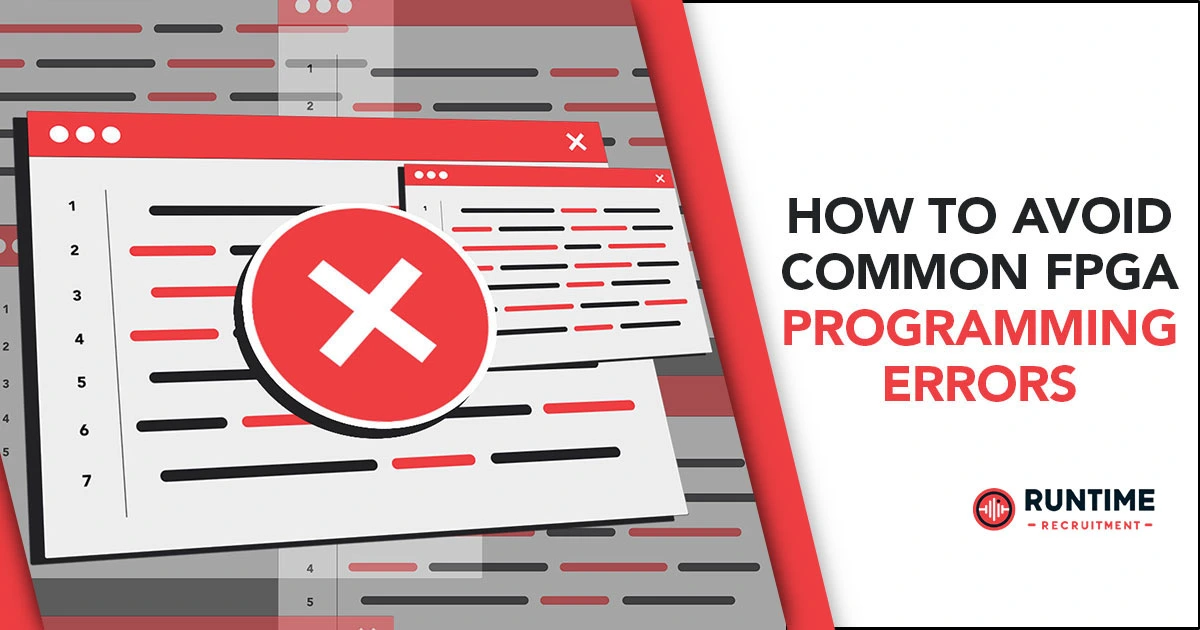As a firmware engineer specializing in Field-Programmable Gate Arrays (FPGAs), I understand the intricacies and challenges that come with FPGA programming. In this technical article, I’ll outline some common FPGA programming errors and provide practical advice on how to avoid them.
1. Syntax and Semantic Errors
Syntax errors in FPGA programming are akin to grammatical mistakes in a language. They occur when the code violates the rules of the language’s syntax, such as incorrect use of keywords or punctuation. Semantic errors, on the other hand, are more insidious. They happen when the code, while syntactically correct, does not behave as intended due to logical flaws or misunderstandings of how functions and operations should work together.
How to Avoid Them:
- Thorough Learning of HDL Syntax: Invest time in thoroughly understanding the syntax of the Hardware Description Language (HDL) you are using, whether it’s VHDL, Verilog, or another language.
- Regular Code Reviews: Conduct systematic code reviews with peers, which can be instrumental in catching both syntax and semantic errors.
- Utilize HDL-Specific IDEs: Employ Integrated Development Environments (IDEs) that are specifically designed for HDLs, as they come equipped with advanced syntax checking and error highlighting features that can catch errors as you type.
2. Timing Errors
Timing errors are critical in FPGA programming and typically manifest when the logic does not operate within the designated clock cycles. This can lead to scenarios where data is not ready when needed or is overwritten too soon. These errors are often a result of overlooked dependencies between signals or inadequate consideration of propagation delays within the FPGA fabric.
How to Avoid Them:
- Implement Robust Timing Constraints: Accurately define timing constraints in your design. This includes setting up correct clock domains, input and output delays, and understanding the timing relationships between different parts of your circuit.
- Use Simulation Tools: Employ advanced simulation tools to model how your design behaves under different timing scenarios. This helps in identifying potential timing issues before they manifest in the hardware.
- Iterative Timing Analysis: Perform timing analysis at various stages of the design process, not just at the end. This includes analyzing critical paths and ensuring that setup and hold times are met.
3. Resource Errors
Resource errors in FPGA programming arise when the design exceeds the physical capabilities of the FPGA. These can include using more logic elements, memory blocks, or I/O pins than what the FPGA can support. Overutilization of resources can lead to issues in successfully programming the FPGA or may impact the performance and reliability of the design.
How to Avoid Them:
- Resource-aware Design: Start your design with a clear understanding of the resource limitations of your target FPGA. This involves planning your logic and memory usage efficiently from the outset.
- Optimization Techniques: Apply optimization techniques in your HDL code, such as minimizing the use of large arithmetic operations, using efficient memory management, and leveraging FPGA-specific features like embedded multipliers or RAM blocks.
- Continuous Monitoring: Regularly check your design’s resource utilization throughout the development process using the FPGA’s development and synthesis tools. This helps in making necessary adjustments before resource limits are exceeded.
4. Power and Thermal Errors
Power and thermal errors in FPGA design are often interrelated. Excessive power consumption can lead to thermal issues, potentially causing the FPGA to overheat, which can result in system instability or failure. These errors usually stem from high switching frequencies, inefficient logic design, or poor power distribution within the FPGA.
How to Avoid Them:
- Power-efficient Design Practices: Adopt power-efficient design practices such as optimizing the clock tree, using lower power states, and minimizing unnecessary switching activities.
- Accurate Power Estimation: Use power estimation tools provided by FPGA manufacturers to get an accurate picture of your design’s power consumption under various scenarios.
- Effective Thermal Management: Incorporate effective thermal management strategies in your design, including using adequate cooling solutions, optimizing the layout for heat dissipation, and considering ambient temperature conditions in your design parameters.
5. Verification and Validation Errors
Verification and validation errors occur when the FPGA design does not function as expected in real-world applications, despite passing simulation tests. These errors can result from inadequate testing scenarios, failure to simulate real-world conditions accurately, or assumptions made during the design phase that do not hold in practice.
How to Avoid Them:
- Comprehensive Testing Strategies: Develop comprehensive testing strategies that cover a wide range of scenarios, including edge cases that the FPGA might encounter in its operational environment.
- Emulate Real-World Conditions: Use emulation tools and techniques to simulate the FPGA’s operation in real-world conditions as closely as possible.
- Feedback Loop Integration: Implement a feedback loop in your design process, where findings from testing and validation are used to iteratively improve the design.
Conclusion
Avoiding common FPGA programming errors requires a combination of careful planning, a thorough understanding of the FPGA’s capabilities and limitations, and rigorous testing. By adhering to best practices in FPGA programming and utilizing the available tools effectively, you can significantly reduce the likelihood of these errors and ensure a more robust and reliable FPGA design.
Remember, the key to successful FPGA programming lies in meticulous design, constant learning, and adaptability to new challenges and solutions.
Hire the Best Engineers with RunTime Recruitment
If you’re searching for highly skilled engineers worldwide, our expert team of engineers-turned-recruiters is here to help you. We offer in-depth knowledge of technical recruiting in the engineering industry to make the sourcing process much easier for you.
On the other hand, if you’re an engineer looking for new opportunities, RunTime Recruitment’s job site is the perfect place to find job vacancies.









